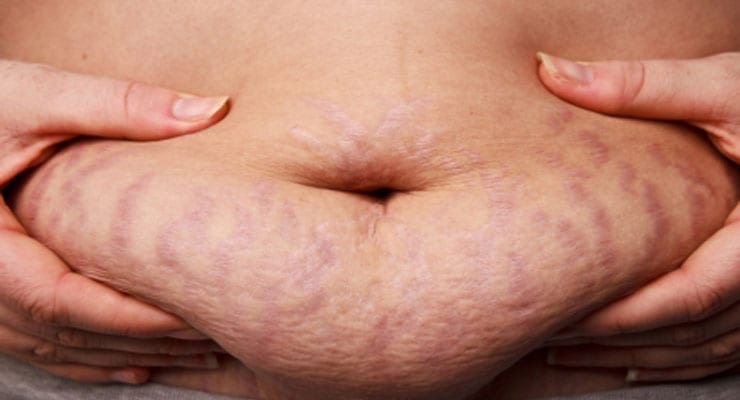Stop what you’re doing. Seriously.
Go to YouTube and watch BirthMarkings, a short film by documentary filmmaker Margaret Lazarus that’s currently being featured on the online International Museum of Women’s exhibit entitled, “Mama: Motherhood Around the Globe.”
It’s a 20-minute video comprised of women talking about the scars, loose skin and extra bulk that was left behind on their bodies after they gave birth. The video is remarkable in that it’s incredibly simple but its message is deafening.
As you hear women talk about what they’ve felt and experienced during and after childbirth – from hating their post-partum bodies, fearing that they’ll never be seen as sexually attractive and worrying that they don’t think they look “good,” to accepting their new shape as badges of maternal honor and reminders of their happiness that they’d been able to experience pregnancy – you see only their bare midriffs, their arms and hands and their hips.
These are images we’re not typically shown in art, on television, in photography, in films, in media. We don’t often see the authentic post-pregnancy bodies of other women unless we happen to be in the medical profession. The only one I see is my own in the mirror. (Two of my three kids were twins, so believe me I know of what I speak.)
Interspersed with these compellingly and refreshingly honest images, we see images of nature that resemble physical maternal transformation, the streaked sands of the beach once the tide has receded, twisted regal tree trunks, vibrant streams piercing rocky terrain. They’re beautiful in nature, no doubt that most would agree on that, but we’re sent the message that to see something similar and just as natural on actual women is shameful, embarrassing and ugly.
Women who struggle with loose post-pregnancy abdominal skin and stretch marks have not been sent the message that the way our bodies look is normal and that many people bear the permanent marks of pregnancy while a few emerge relatively unscathed. Many, myself included, feel as though the way our abdomens appear must be some kind of aberration or else why wouldn’t I have seen others like ours?
It only makes matters worse that the media are saturated with countless images of celebrity mothers whose only job is to “bounce back into shape” after having a baby. (If they don’t, God help them as the tabloids and snarky websites hound them mercilessly.) However these are the women who have personal trainers, nannies, nutritionists, personal chefs, housekeepers and, most importantly, plastic surgeons at their disposal. This isn’t the life and experience of the average American mother who’s just trying to get through the day.
While there is enormous pressure on celebrity moms to “return” to their sexy, pre-baby state — even if a surgeon’s knife is required — it’s kind of masochistically unrealistic for us to compare our bodies to theirs. Honestly, I don’t live Jennifer Lopez’s kind life but when I see images and videos of her, a woman who’s my age and who also has twins, I admit that it doesn’t make me feel so great, particularly when she flashes her taut abs on the beach. Even if I went bananas with crunches and diets, my stretch marks and loose skin would remain, unless I had surgery, which doesn’t interest me.
The question that Lazarus’ short video asks is why would women consider surgery to eliminate the physical reminders that our bodies once housed and nurtured children? Is it because we don’t see other women who have stomachs like ours? Because we’ve been trained by society and the media to feel badly about what happens to our bodies after childbirth?
The answers to those questions are definitely as provocative as the questions themselves.





